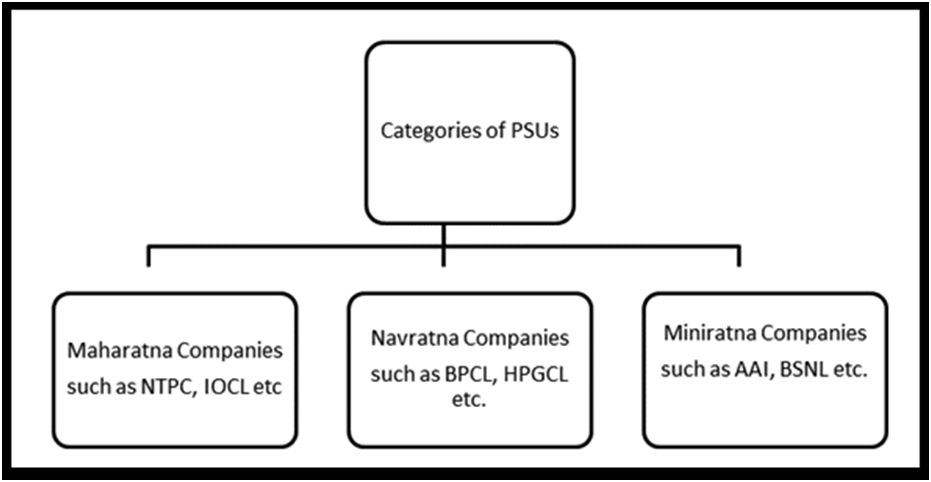Navaratnas and Mini Ratnas
The government also made attempts to improve the efficiency of public sector undertakings by giving them autonomy in taking managerial decisions.
- For instance, some PSUs have been granted special status as navaratnas and mini ratnas.
- In order to infuse professionalism and enable PSU's to compete more effectively in the liberalised global environment; government started granting 'Navaratnas' status to PSUs.
- They were given greater managerial and operational autonomy in taking various decisions, to run the company efficiently and to increase their profits.
- The granting of navaratna status resulted in better performance of these companies.
- Apart from this, other profit-making enterprises were granted greater operational, financial and managerial autonomy and they were referred as ‘Mini Ratnas'. As on 13th September, 2017, there are 8 Maharatnas, 16 Navratnas and 74 Miniratnas.
A few examples of public enterprises with their status are as follows:
- Maharatnas – (a) Indian Oil Corporation Limited, and (b) Steel Authority of India Limited,
- Navratnas – (a) Hindustan Aeronautics Limited, (b) Mahanagar Telephone Nigam Limited; and
- Miniratnas – (a) Bharat Sanchar Nigam Limited; (b) Airport Authority of India and (c) Indian Railway Catering and Tourism Corporation Limited.
Many of these profitable PSEs were originally formed during the 1950s and 1960s when self-reliance was an important element of public policy.


 PathSet Publications
PathSet Publications
